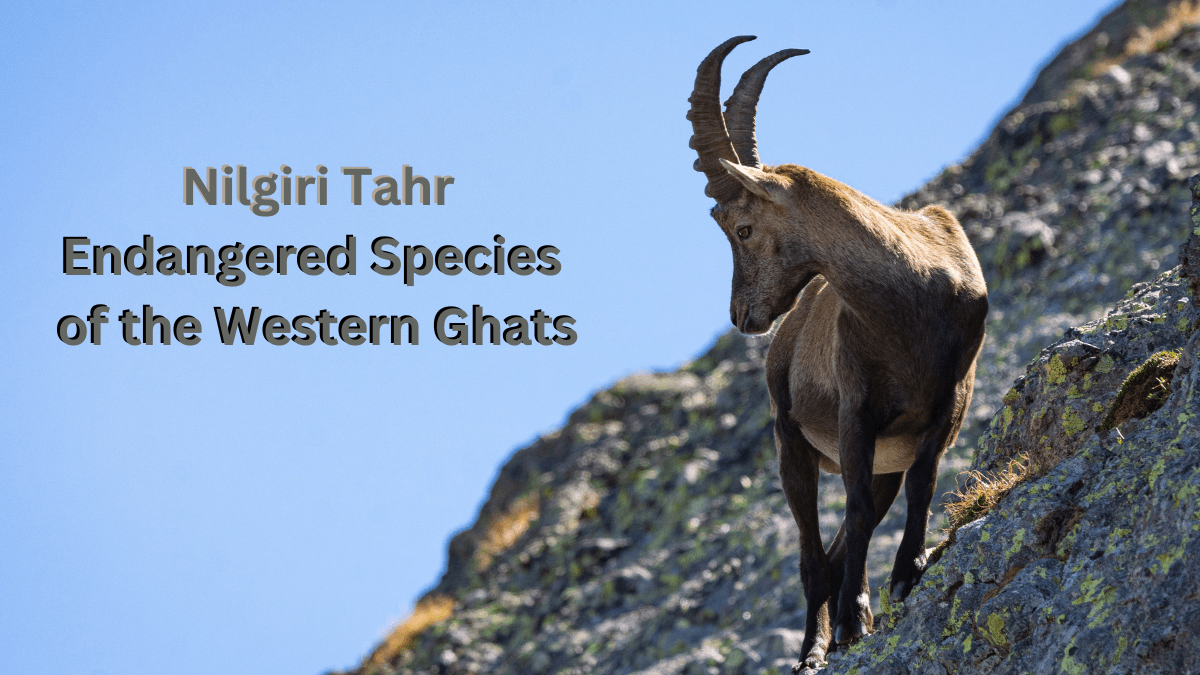Endangered Animal Species in India: A Closer Look at Threatened Species
India is known for its biodiversity and is home to some of its most unique wildlife species. From the majestic Bengal tiger to the rare snow leopard, these creatures are proud of the country’s natural heritage. Due to some of the human activities, these animals are facing difficult times. Here we discuss some of the most endangered animal species in India, the difficulties they face, and the conservation efforts in place to protect them.
What Does Endangered Mean?
An endangered species is one that is at serious risk of extinction. According to the International Union for Conservation of Nature (IUCN), species are classified based on their conservation status. These categories range from “Least Concern” to “Extinct,” with “Endangered” being a high-risk status just before a species becomes critically endangered or extinct in the wild.
India’s Rich Biodiversity Under Threat
India is one of the world’s biodiversity hotspots, boasting a wide variety of ecosystems, from rainforests to deserts. Despite this, human activity has increasingly threatened wildlife. Deforestation for agriculture, urbanization, poaching, and climate change are among the primary reasons many species in India are now endangered. Let’s explore some of these vulnerable animals.
1. Bengal Tiger (Panthera tigris)
The Bengal tiger, India’s national animal, is perhaps the most well-known endangered species in the country. Once widespread across Asia, this powerful predator now has a limited range, primarily in India’s protected reserves. While their numbers have increased slightly due to conservation efforts like Project Tiger, the species remains under threat.
Tigers face challenges from poaching, primarily for their pelts and body parts, and habitat fragmentation. Human encroachment into their habitats often leads to conflict, where tigers are killed for attacking livestock or even humans. National parks like Sundarbans and Ranthambore are key to their survival, with ongoing efforts to increase their population.
2. Asiatic Lion (Panthera leo persica)
The Asiatic lion, once found across much of Asia, now exists only in the Gir Forest of Gujarat. These lions are a fraction of their African relatives, with fewer than 700 individuals left in the wild. Despite their rebound due to focused conservation efforts, these majestic creatures face serious threats.
The biggest challenges to Asiatic lions include habitat loss, inbreeding due to a small population size, and human-wildlife conflict as human settlements expand into their territory. The Gir Forest National Park remains their last stronghold, where strict protection measures have been implemented.
3. Indian Elephant (Elephas maximus indicus)
The Indian elephant, a crucial species in India’s forests, plays a vital role in maintaining ecosystem health. However, the species is endangered, primarily due to poaching for ivory and habitat loss caused by deforestation. As human settlements and agricultural activities expand, elephants are losing their natural habitats, leading to an increase in human-animal conflicts.
Conservation efforts to protect the species include the creation and preservation of elephant corridors, allowing for safe migration between habitats. While the government has banned the ivory trade, poaching remains a significant threat to the elephant population.
4. Snow Leopard (Panthera uncia)
Snow leopards, found in the high-altitude regions of the Himalayas, are among India’s most elusive and endangered big cats. Their remote habitat makes population estimates difficult, but their numbers are believed to be fewer than 7,000 globally.
The primary threats to snow leopards are poaching for their fur and bones, retaliatory killings by herders, and the shrinking of their natural habitat due to climate change. Conservation programs like Project Snow Leopard aim to protect their habitats and mitigate human-wildlife conflict.
5. Ganges River Dolphin (Platanista gangetica)
The Ganges River Dolphin, India’s national aquatic animal, is critically endangered, with fewer than 2,000 individuals left. This species plays a vital role in maintaining the health of river ecosystems but faces severe threats from pollution, accidental entanglement in fishing nets, and habitat fragmentation caused by dam construction.
Conservation efforts for this endangered animal species in India focus on reducing river pollution and regulating fishing practices to prevent dolphin deaths. Additionally, the establishment of protected areas along key river stretches has helped slow the decline of the Ganges River Dolphin population.
6. Great Indian Bustard (Ardeotis nigriceps)
The Great Indian Bustard is one of the heaviest flying birds and is critically endangered, with only around 150 individuals remaining in the wild. These birds once thrived in the grasslands of India but have faced massive population declines due to habitat loss, hunting, and collisions with power lines.
Conservation projects, including habitat restoration and the creation of safe zones, are underway to prevent the extinction of this iconic species. However, the future of the Great Indian Bustard remains precarious.
7. One-Horned Rhinoceros (Rhinoceros unicornis)
Found primarily in Assam, the one-horned rhinoceros is another conservation success story in India. Once on the brink of extinction, the population has rebounded due to concerted efforts in protected areas like Kaziranga National Park. Currently, there are around 3,500 individuals left.
Despite these successes, poaching for rhino horn remains a significant threat. Continued vigilance is required to ensure that the species can thrive in the wild.
8. Red Panda (Ailurus fulgens)
The Red Panda, a small mammal native to the Eastern Himalayas, is endangered due to habitat destruction and illegal hunting. Found in parts of northeastern India, Red Pandas are primarily threatened by deforestation caused by agriculture and infrastructure development.
Conservation programs aim to protect their forest habitats and raise awareness about the importance of preserving these unique animals.
9. Indian Pangolin (Manis crassicaudata)
The Indian Pangolin, a scaly mammal known for its unique defense mechanism of rolling into a ball, is highly endangered due to poaching. Pangolins are heavily trafficked for their scales, which are used in traditional medicine, particularly in parts of Asia.
Despite legal protections, the illegal trade of pangolins continues to threaten their survival. Efforts are being made to increase enforcement against wildlife trafficking and protect their habitats.
10. Nilgiri Tahr (Nilgiritragus hylocrius)
The Nilgiri Tahr, a goat-like animal native to the Western Ghats, is an endangered animal species in India, primarily due to habitat fragmentation and hunting. These animals play a crucial role in maintaining the mountain ecosystems, but their population has been severely impacted by human encroachment.
To aid in their recovery, authorities have launched conservation programs aimed at restoring habitats and controlling poaching, allowing the population of this endangered species in India to slowly but steadily recover.
Conservation Challenges and Initiatives in India
India has initiated several conservation programs, such as Project Tiger, Project Elephant, and Project Snow Leopard. These initiatives, combined with the creation of protected areas like national parks and wildlife sanctuaries, have contributed to stabilizing the populations of certain species. However, challenges like poaching, illegal wildlife trade, and human-wildlife conflicts continue to hinder further progress.
The Role of Ecotourism in Conservation
Ecotourism plays a vital role in the conservation of endangered animal species in India, raising awareness and providing necessary funding for protection efforts. Responsible tourism ensures that local communities benefit from preserving wildlife, encouraging their active support for conservation initiatives.
Protecting India’s endangered species is not only about saving individual animals but also about preserving entire ecosystems, cultural heritage, and future biodiversity. Every species contributes to maintaining the natural balance, and their extinction would have serious long-term impacts on the environment. By supporting conservation efforts at both national and individual levels, we can safeguard India’s incredible wildlife for generations to come.
FAQs
1. How many endangered species are there in India?
India is home to over 1,200 species that are considered endangered or critically endangered, according to the IUCN Red List.
2. What is the government doing to protect endangered species?
The Indian government has launched several initiatives, including wildlife protection laws, conservation projects, and the establishment of protected areas like national parks and sanctuaries.
3. How can individuals contribute to wildlife conservation?
Individuals can support wildlife conservation by promoting awareness, reducing their environmental impact, donating to conservation organizations, and supporting responsible ecotourism.
4. What are some successful conservation stories in India?
The recovery of the one-horned rhinoceros and the Bengal tiger are among India’s most notable conservation successes, thanks to targeted initiatives and strict protection measures.
5. Why is it important to save endangered species?
Endangered species are crucial for maintaining biodiversity and the health of ecosystems. Their extinction can have cascading effects that disrupt the balance of nature, impacting humans and other wildlife alike.
Discover more from Bhuchi's World
Subscribe to get the latest posts sent to your email.














Post Comment